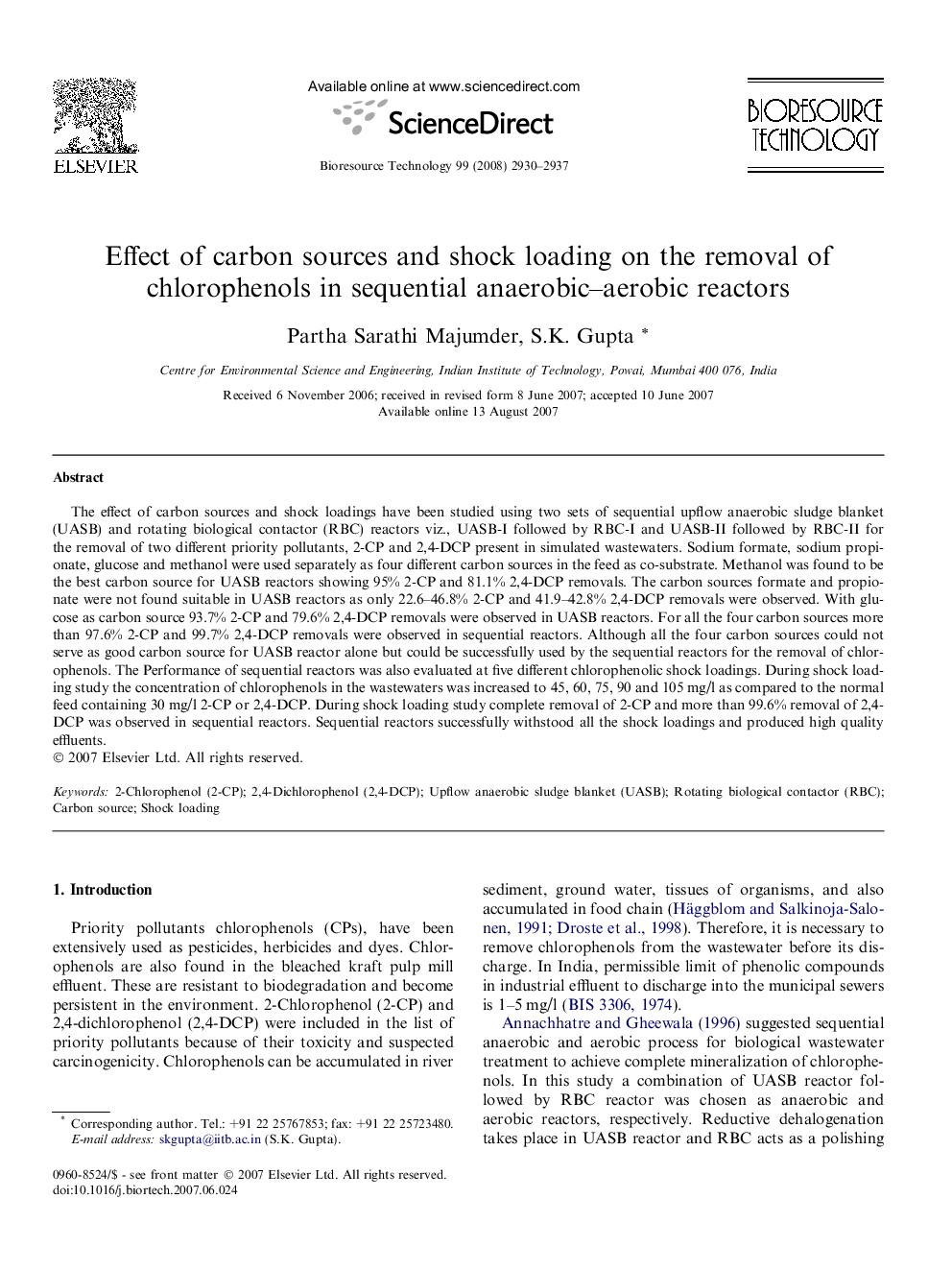| کد مقاله | کد نشریه | سال انتشار | مقاله انگلیسی | نسخه تمام متن |
|---|---|---|---|---|
| 685751 | 889049 | 2008 | 8 صفحه PDF | دانلود رایگان |

The effect of carbon sources and shock loadings have been studied using two sets of sequential upflow anaerobic sludge blanket (UASB) and rotating biological contactor (RBC) reactors viz., UASB-I followed by RBC-I and UASB-II followed by RBC-II for the removal of two different priority pollutants, 2-CP and 2,4-DCP present in simulated wastewaters. Sodium formate, sodium propionate, glucose and methanol were used separately as four different carbon sources in the feed as co-substrate. Methanol was found to be the best carbon source for UASB reactors showing 95% 2-CP and 81.1% 2,4-DCP removals. The carbon sources formate and propionate were not found suitable in UASB reactors as only 22.6–46.8% 2-CP and 41.9–42.8% 2,4-DCP removals were observed. With glucose as carbon source 93.7% 2-CP and 79.6% 2,4-DCP removals were observed in UASB reactors. For all the four carbon sources more than 97.6% 2-CP and 99.7% 2,4-DCP removals were observed in sequential reactors. Although all the four carbon sources could not serve as good carbon source for UASB reactor alone but could be successfully used by the sequential reactors for the removal of chlorophenols. The Performance of sequential reactors was also evaluated at five different chlorophenolic shock loadings. During shock loading study the concentration of chlorophenols in the wastewaters was increased to 45, 60, 75, 90 and 105 mg/l as compared to the normal feed containing 30 mg/l 2-CP or 2,4-DCP. During shock loading study complete removal of 2-CP and more than 99.6% removal of 2,4-DCP was observed in sequential reactors. Sequential reactors successfully withstood all the shock loadings and produced high quality effluents.
Journal: Bioresource Technology - Volume 99, Issue 8, May 2008, Pages 2930–2937